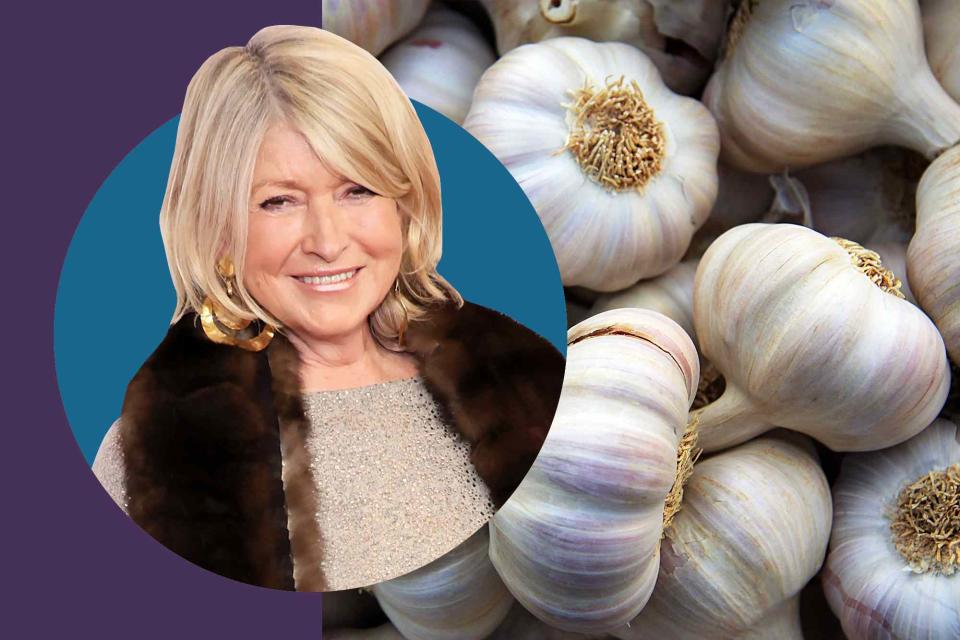Martha Stewart Says This Trick Can Remove of the Smell of Garlic on Your Hands — Here's What Science Really Says
Does it work?

Dia Dipasupil / Getty Images; Getty Images
If there’s one person you should take advice from in the kitchen, it’s Martha Stewart. The queen of entertaining has long shared her advice in her books, magazine, website, and now, on her TikTok channel, too. One of her recent handy tips really caught our attention for just how simple it is.
“Do you know how to get the smell of garlic off your fingers,” Stewart began in the 13-second clip as she stood over a sink. “Run your water warm, and you can use a knife like this,” she added, holding up a rather large chopping knife. “Anything stainless steel. Just rub your fingers on it under running water, and the smell of garlic disappears.”
Yes, it really is that simple, and yes, it really can work. Probably. Maybe.
As BBC’s Science Focus reported, it all comes down to garlic’s sulfur-containing chemicals, which make it smell and taste the way it does.
“One of them, called allicin, is probably responsible for making your hands smell,” the news outlet wrote. “Stainless steel is an alloy, which is predominantly made of iron but also contains chromium. The chromium forms an oxide layer on the surface of the alloy, protecting the iron from rusting. It could be that the oxide layer reacts with the allicin from the garlic, making it cling to the surface of the stainless steel instead of your hands.”
:5 Timeless Holiday Entertaining Tips from Martha Stewart
However, it’s important to note that there is very little science outside of anecdotal evidence (and Martha Stewart) telling us it’s true. In 2006, NPR even interviewed Dr. Bob Wolke, a professor emeritus of chemistry at the University of Pittsburgh, about this very stinky problem. Wolke noted there were no peer-reviewed studies at the time proving it to be true, so he took to experimenting himself. According to NPR, Wolke smashed a piece of garlic and rubbed it into his hands for the name of science. Next, he reported, he "rinsed the solids off under cold water" and "picked up the stainless steel block, and I rubbed it on my hands."
After sniffing his hands, Wolke shared that he could (sadly) still smell the garlic. But as any good scientist would, he repeated the process, this time with a plain rock, and again with soap and water. Each time, he reported, "There was odor left on my hands after all of these methods." But here’s the good news: Wolke also said his method wasn’t perfect, and it could indeed work for some.
The next time you’re chopping garlic for a delicious Italian meal, set up your own scientific experiment. Try Stewart’s method on one hand, and plain soap on the other. Then, send us a DM (or Stewart) and let us know how, and if, either worked for you.

